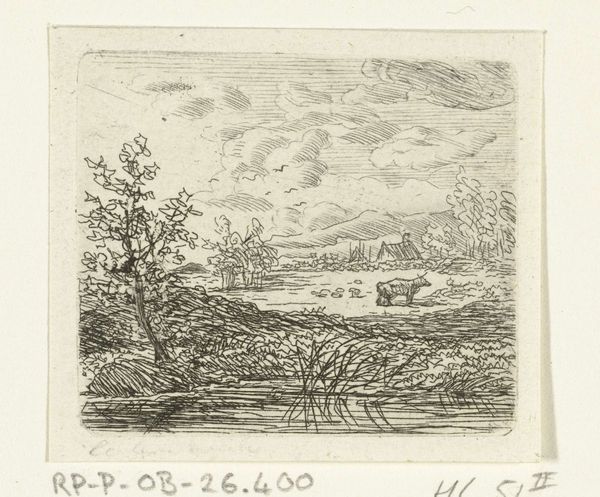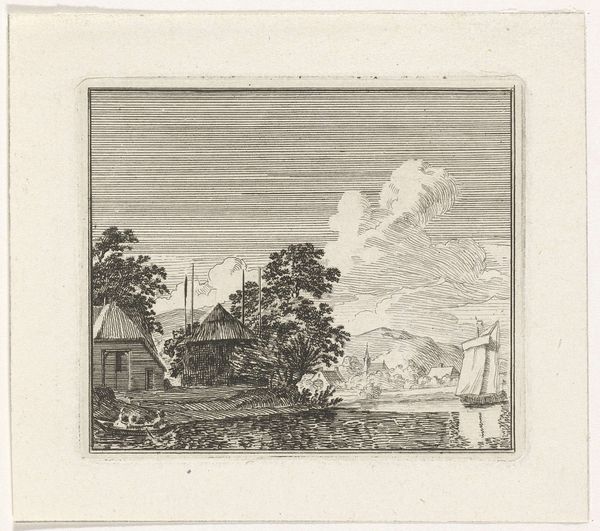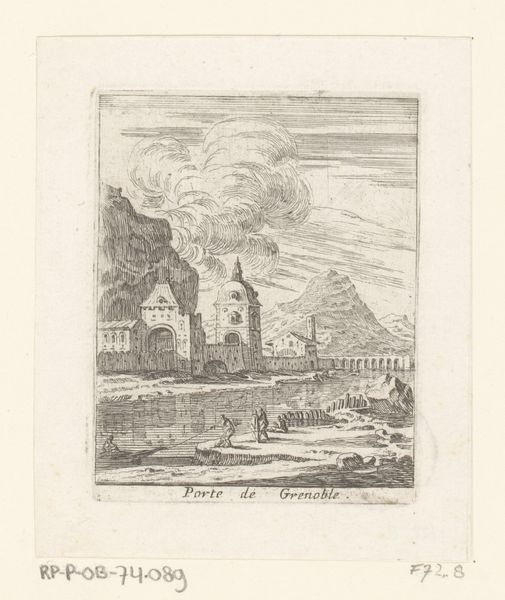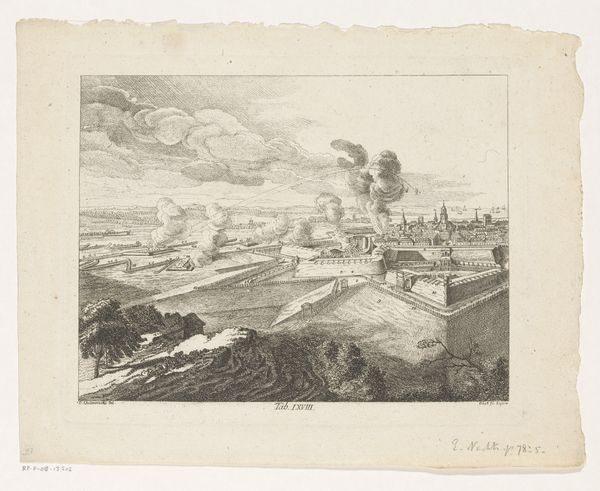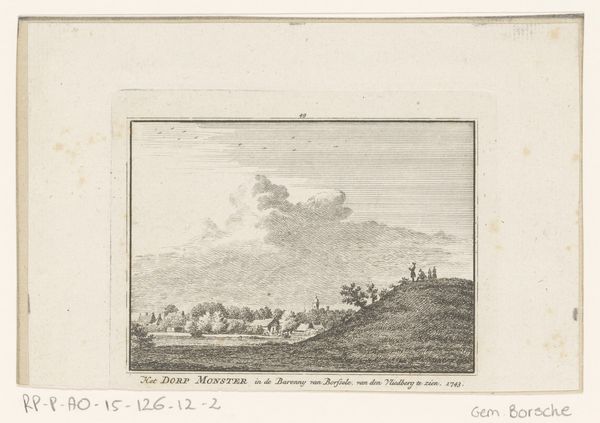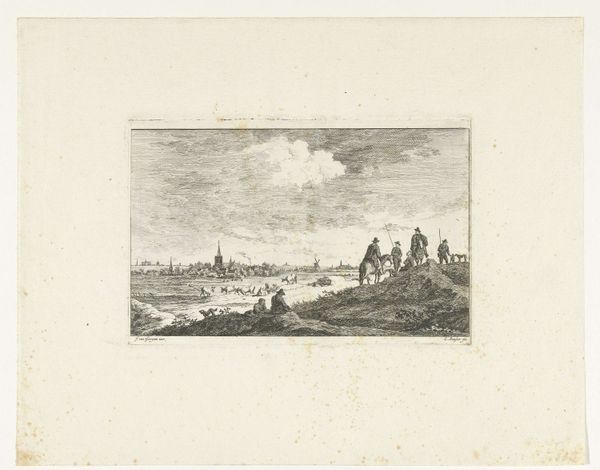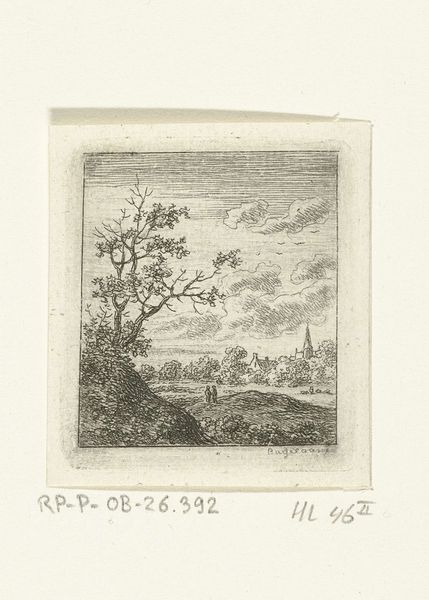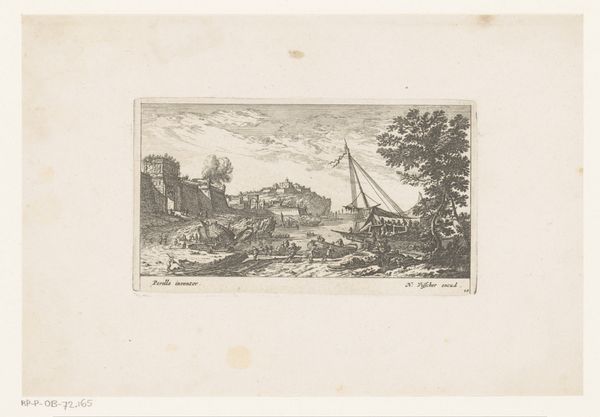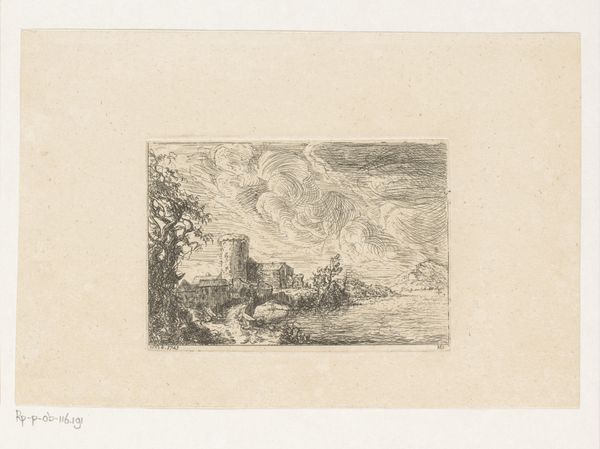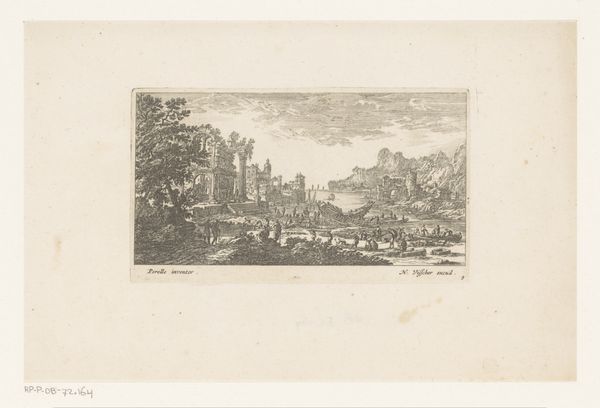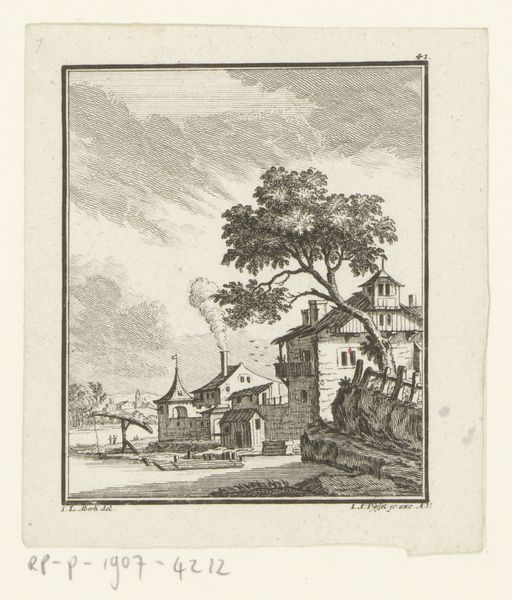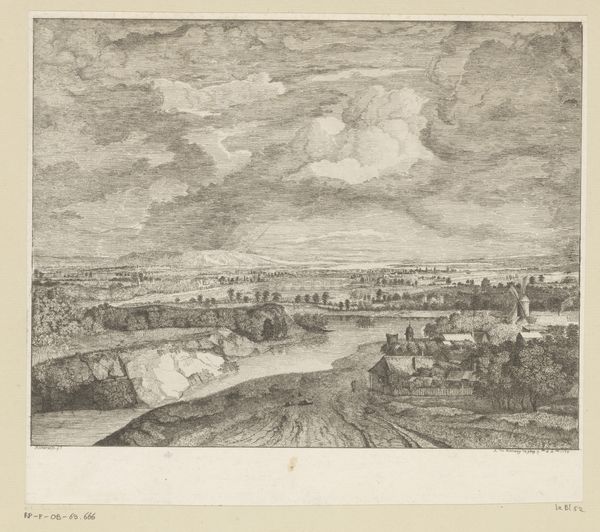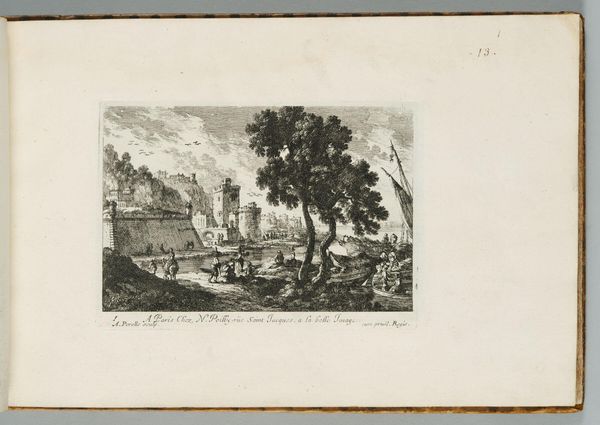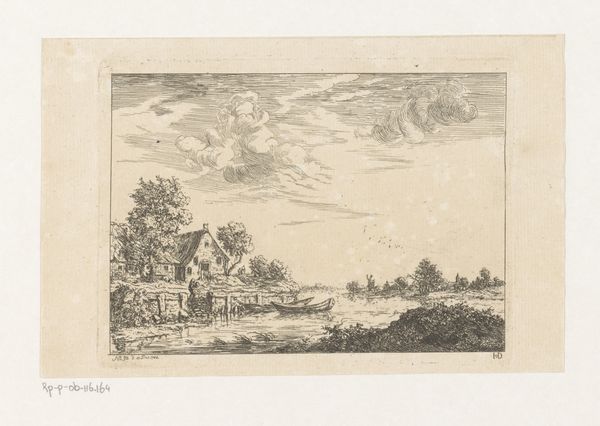
print, etching
#
dutch-golden-age
# print
#
etching
#
old engraving style
#
landscape
#
personal sketchbook
#
genre-painting
#
realism
Dimensions: height 67 mm, width 82 mm
Copyright: Rijks Museum: Open Domain
Editor: We're looking at Jan van Noort's "Landschap met water en figuren," made sometime between 1766 and 1837. It's an etching, so a print, and it feels incredibly detailed despite its small scale. All the tiny figures working in the fields really give you a sense of daily life. How do you interpret this work? Curator: I see a fascinating intersection of artistic and social commentary. Van Noort, working in a period saturated with ideas about the common man, positions labor at the heart of this landscape. What strikes me is the deliberate inclusion of various societal strata. Do you notice the figures engaged in different kinds of work, from agricultural labor to possibly leisure activities on the water? Editor: Yes, I see people digging, others sailing... it feels like a slice of life, but a curated slice. Curator: Exactly. Think about the institutions of art at the time – the academies, the salons. Landscape art was becoming increasingly popular, offering a way to represent national identity and the social order. How does van Noort engage with that expectation through the genre-painting feel that these activities portray? Is he simply depicting a scene, or is he subtly making a statement about the value of work and the integration of different social classes? Editor: That's interesting. So, by showing these scenes of labor, he’s not just painting pretty scenery; he's maybe elevating the everyday experiences of ordinary people. It makes me consider how public access and consumption of such images would affect people’s sense of community. Curator: Precisely! The 'personal sketchbook' feel and widespread distribution of prints allowed such imagery to shape public perception. These landscapes become political statements by portraying the common man, wouldn't you agree? Editor: Absolutely! Thinking about it as a carefully constructed representation of Dutch society really changes my perspective. Thanks for that insight! Curator: My pleasure! It's these nuanced layers of social commentary that make these seemingly simple landscapes so rich and enduring.
Comments
No comments
Be the first to comment and join the conversation on the ultimate creative platform.
